|
Printables |
PowerPoints |
Online exercises |
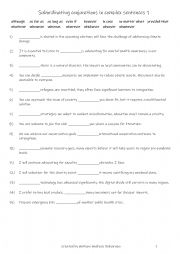
|
B1+-B2 15 subordinating conjunctions in complex sentences part 1
Using subordinating conjunctions allows students to express more detailed and nuanced thoughts. For instance, "although" and "even if" help convey contrast or condition in sophisticated ways. They add variety to writing and speaking, moving beyond simple sentences and making communication more engaging and dynamic. For example, "whenever" or "whoev...
Level: intermediate
Age: 10-100
Type:
Downloads: 112
|
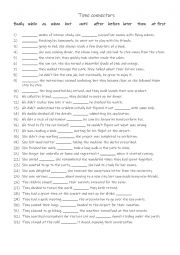
|
A2+-B1 11 Time connectors:finally,while,as,when,but,until,after,before,later,then & at first
Students read the sentences and complete the gap-fill with a suitable time connector. Each conjunction is used 3 times. Answers on page 2.
Level: intermediate
Age: 8-100
Type:
Downloads: 114
|
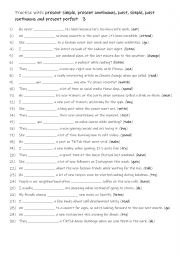
|
Practise with: present simple, present continuous, past, simple, past continuous and present perfect 3
First, students need to familiarise themselves with the 5 tenses and their use. Then they read the sentences to see which one is needed to complete the sentence using the given infinitive in (). Each tense is used 6 times! Answers on page 2.
Level: elementary
Age: 8-100
Type: worksheet
Downloads: 139
|
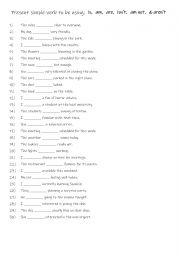
|
A1-A2 Present simple verb to be using is, am, are, isn�t, am not, & aren�t
Students read the sentences to see which form of the verb to be to needed to complete the sentences. Answers on page 2.
Level: elementary
Age: 8-100
Type:
Downloads: 102
|
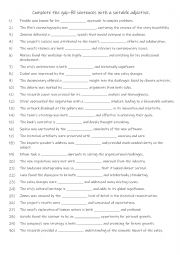
|
C1-C2 Complete the gap-fill sentences with a suitable adjective.
Students read the sentences and complete the gap-fill using a suitable adjective. This worksheet is only suitable for advanced students due to the vocabulary used.However; the teacher could pre-teach the 30 adjectives, then it would be suitable for B2 level students. A speaking reinforcement activity could be used with most of the statements for st...
Level: advanced
Age: 14-100
Type: worksheet
Downloads: 141
|
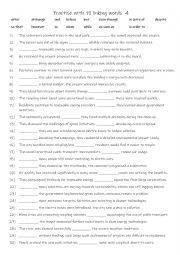
|
A2+-B1 Practise with 15 linking words 4
First, students need to familiarise themselves with the 15 linking words and their usage. Then they read the sentences to see which one is needed to complete the sentences in a natural way. Each linker is used 2 times! Answers on page 2
Level: elementary
Age: 10-100
Type:
Downloads: 100
|
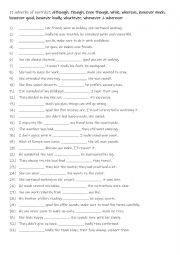
|
B1+ -C1 11 adverbs of contrast although, though, even though, while, whereas, however much, however good, however badly, whatever, whenever & wherever
Learning adverbs of contrast is essential for expressing nuanced ideas and showing the relationship between opposing thoughts or actions. They allow students to introduce exceptions, concessions, and unexpected outcomes, enriching both written and spoken communication. Mastering these adverbs also helps in constructing complex sentences that reflec...
Level: intermediate
Age: 9-100
Type:
Downloads: 125
|
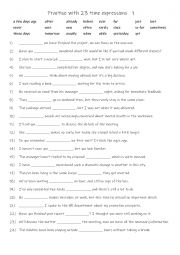
|
A2+-B1 Practise with 23 adverbs of time 1
Students should learn these time expressions because they are essential for clear and precise communication, allowing them to express when events occur in speech and writing. They play a crucial role in mastering grammar, particularly in using tenses accurately, such as employing "since" with the present perfect or "yesterday" with the past simple....
Level: elementary
Age: 9-100
Type: worksheet
Downloads: 120
|
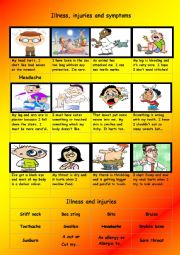
|
Illness, injuries and symptoms
Students to read the symptoms and match the problem to its medical term / condition Part 2 of 2
Level: elementary
Age: 8-100
Type: worksheet
Downloads: 261
|
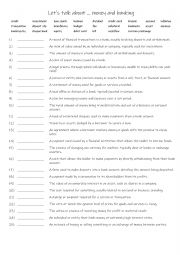
|
B1-B2 Let�s talk about ... money and banking
First, students need to familiarise themselves with the 25 words and their meanings Then they read the definitions to see which one is being described and write that word in the space provided. Answers on page 2.
Level: intermediate
Age: 12-100
Type:
Downloads: 111
|
|
|
|
|












